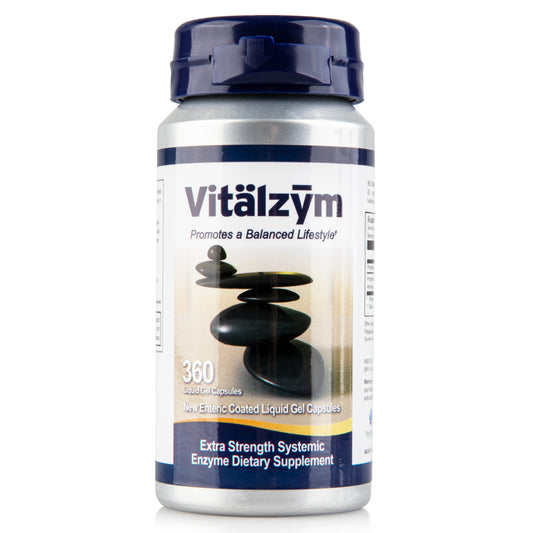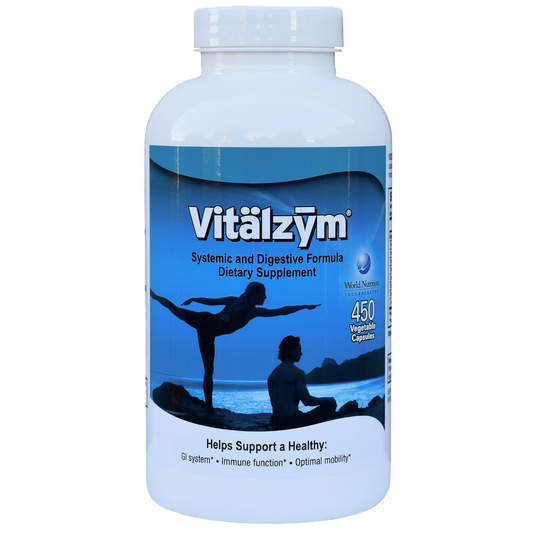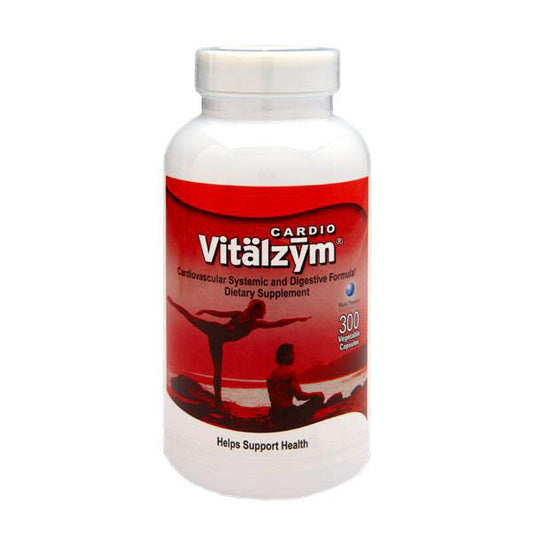As more people seek natural solutions for maintaining heart health and reducing inflammation, lumbrokinase and serrapeptase have emerged as popular choices. Both enzymes offer promising benefits, but understanding their differences is crucial for making the best choice for your health needs. This article explores the origins, benefits, and mechanisms of these powerful enzymes, offering a detailed comparison to guide you in selecting the most suitable supplement for your wellness journey.
What Is Lumbrokinase?
Lumbrokinase is a potent enzyme complex derived from earthworms, specifically known for its fibrinolytic properties, which means it helps break down fibrin, a protein involved in blood clotting. This enzyme has been extensively studied for its ability to support cardiovascular health by improving blood flow and reducing the risk of thrombosis. By promoting the dissolution of blood clots, lumbrokinase can aid in preventing conditions such as stroke and heart attack. Additionally, it exhibits anti-inflammatory properties, making it a valuable natural remedy for individuals seeking to enhance their circulatory health and manage inflammation.
What Is Serrapeptase?
Serrapeptase, also known as serratiopeptidase, is a proteolytic enzyme originally derived from the digestive system of the silkworm, playing a crucial role in digestion. Renowned for its powerful anti-inflammatory and pain-relieving properties, serrapeptase works by breaking down non-living tissue, mucus, and fibrin, thereby reducing inflammation and promoting healing. It is widely used to alleviate conditions such as arthritis, sinusitis, and post-surgical swelling. By enhancing the body's natural ability to dissolve scar tissue and reduce fluid retention, serrapeptase supports overall health and well-being, making it a popular choice among those seeking natural remedies for inflammation and pain management.
Lumbrokinase vs Serrapeptase What’s The Difference?
Origin:
- Lumbrokinase: Derived from earthworms, specifically known for its fibrinolytic properties.
- Serrapeptase: Extracted from the digestive system of silkworms, recognized for its proteolytic activity.
Primary Benefits:
- Lumbrokinase: Primarily supports cardiovascular health by breaking down fibrin and improving blood flow, reducing the risk of blood clots, strokes, and heart attacks.
- Serrapeptase: Known for its anti-inflammatory and pain-relieving properties, it helps reduce inflammation, dissolve scar tissue, and alleviate conditions like arthritis and sinusitis.
Mechanism of Action:
- Lumbrokinase: Works by breaking down fibrin, a protein involved in blood clotting, thereby promoting the dissolution of blood clots and enhancing circulation.
- Serrapeptase: Breaks down non-living tissue, mucus, and fibrin, reducing inflammation and promoting healing by enhancing the body's natural ability to dissolve scar tissue and reduce fluid retention.
Usage and Dosage:
- Lumbrokinase: Typically taken to support cardiovascular health, with dosages varying based on individual needs and health conditions.
- Serrapeptase: Often used for its anti-inflammatory effects, with dosages tailored to the specific condition being treated, such as arthritis or post-surgical swelling.
Safety and Precautions:
- Lumbrokinase: Generally considered safe, but individuals on blood-thinning medications should consult a healthcare provider due to its potent fibrinolytic activity.
- Serrapeptase: Also considered safe, but those with bleeding disorders or on anticoagulant therapy should seek medical advice before use due to its proteolytic nature.
By understanding these key differences, individuals can make informed decisions about which enzyme best suits their health needs and goals.

Can Lumbrokinase Dissolve Blood Clots?
Yes, lumbrokinase can dissolve blood clots. This enzyme complex, derived from earthworms, possesses potent fibrinolytic properties, meaning it can break down fibrin, the protein that forms the structural basis of blood clots. By promoting the dissolution of fibrin, lumbrokinase helps to improve blood flow and reduce the risk of thrombosis, which can lead to serious cardiovascular events such as strokes and heart attacks. Its ability to target and degrade fibrin makes it a valuable natural remedy for individuals seeking to enhance their circulatory health and prevent the formation of dangerous blood clots.
Is Lumbrokinase An Anti-Inflammatory?
Yes, lumbrokinase exhibits anti-inflammatory properties in addition to its well-known fibrinolytic effects. By breaking down fibrin and improving blood circulation, it helps reduce inflammation in the body. Inflammation often results from poor blood flow and the accumulation of fibrin in tissues, which can lead to pain and swelling. By enhancing circulation and promoting the removal of fibrin, lumbrokinase aids in alleviating these inflammatory responses. This dual action makes it a valuable supplement for individuals looking to manage inflammation naturally while also supporting cardiovascular health.
When Should Lumbrokinase Be Used Over Serrapeptase?
Lumbrokinase should be used over serrapeptase when the primary health concern is related to cardiovascular issues, such as preventing blood clots, improving blood flow, and reducing the risk of strokes and heart attacks. Its potent fibrinolytic properties make it particularly effective in breaking down fibrin and enhancing circulation, which are crucial for maintaining heart health. Additionally, lumbrokinase is beneficial for individuals seeking to manage inflammation that is directly linked to poor blood flow and fibrin accumulation. While serrapeptase also offers anti-inflammatory benefits, lumbrokinase's specific action on blood clot prevention and cardiovascular support makes it the preferred choice for those with a focus on heart health and circulatory issues.
Can Lumbrokinase and Serrapeptase Be Taken Together?
Yes, lumbrokinase and serrapeptase can be taken together, and doing so may offer complementary benefits for overall health. While lumbrokinase primarily focuses on improving cardiovascular health by breaking down fibrin and preventing blood clots, serrapeptase excels in reducing inflammation and pain by breaking down non-living tissue, mucus, and fibrin. Combining these enzymes can provide a synergistic effect, enhancing blood flow, reducing inflammation, and promoting healing more effectively than either enzyme alone. However, it is essential to consult with a healthcare provider before starting any new supplement regimen, especially for individuals on blood-thinning medications or those with bleeding disorders, to ensure safety and appropriate dosing.
How Is Nattokinase Related To Lumbrokinase and Serrapeptase?
Nattokinase, lumbrokinase, and serrapeptase are all proteolytic enzymes known for their health benefits, particularly in cardiovascular and inflammatory health. Nattokinase is derived from natto, a traditional Japanese fermented soybean dish, and is renowned for its ability to break down fibrin and improve blood flow, similar to lumbrokinase. Both nattokinase and lumbrokinase are primarily used to support cardiovascular health by preventing blood clots and enhancing circulation. Serrapeptase, on the other hand, is derived from the digestive system of silkworms and is celebrated for its potent anti-inflammatory and pain-relieving properties. While all three enzymes share the common trait of breaking down proteins to promote health, their origins and specific applications differ, making them complementary in a holistic approach to managing cardiovascular and inflammatory conditions.
Conclusion
In conclusion, understanding the unique properties and benefits of lumbrokinase, serrapeptase, and nattokinase can empower individuals to make informed decisions about their health. Each enzyme offers distinct advantages: lumbrokinase excels in cardiovascular support by dissolving blood clots and enhancing circulation, serrapeptase is renowned for its anti-inflammatory and pain-relieving properties, and nattokinase provides similar cardiovascular benefits with its fibrin-dissolving capabilities. By leveraging the strengths of these enzymes, either individually or in combination, individuals can adopt a holistic approach to managing cardiovascular and inflammatory conditions, ultimately fostering a healthier and more vibrant life.
Final Thoughts
Elevate your health with Vitalzym Extra Strength, an innovative enzyme supplement from World Nutrition. This vegetarian-friendly formula utilizes papain from papaya to increase enzyme levels, strengthen immune function, accelerate recovery, and support healthy blood circulation. By integrating serrapeptase, bromelain, and other key ingredients, Vitalzym fosters a healthier, more vibrant life. Experience the remarkable benefits of World Nutrition's papaya-infused products and achieve superior well-being.*
Sources
- https://en.wikipedia.org/wiki/Lumbrokinase
- https://en.wikipedia.org/wiki/Serratiopeptidase
- https://www.youtube.com/watch?v=psGC1O6kH8w
These statements have not been evaluated by the food and drug administration (FDA). These products are not intended to diagnose, treat, cure, or prevent any disease.







